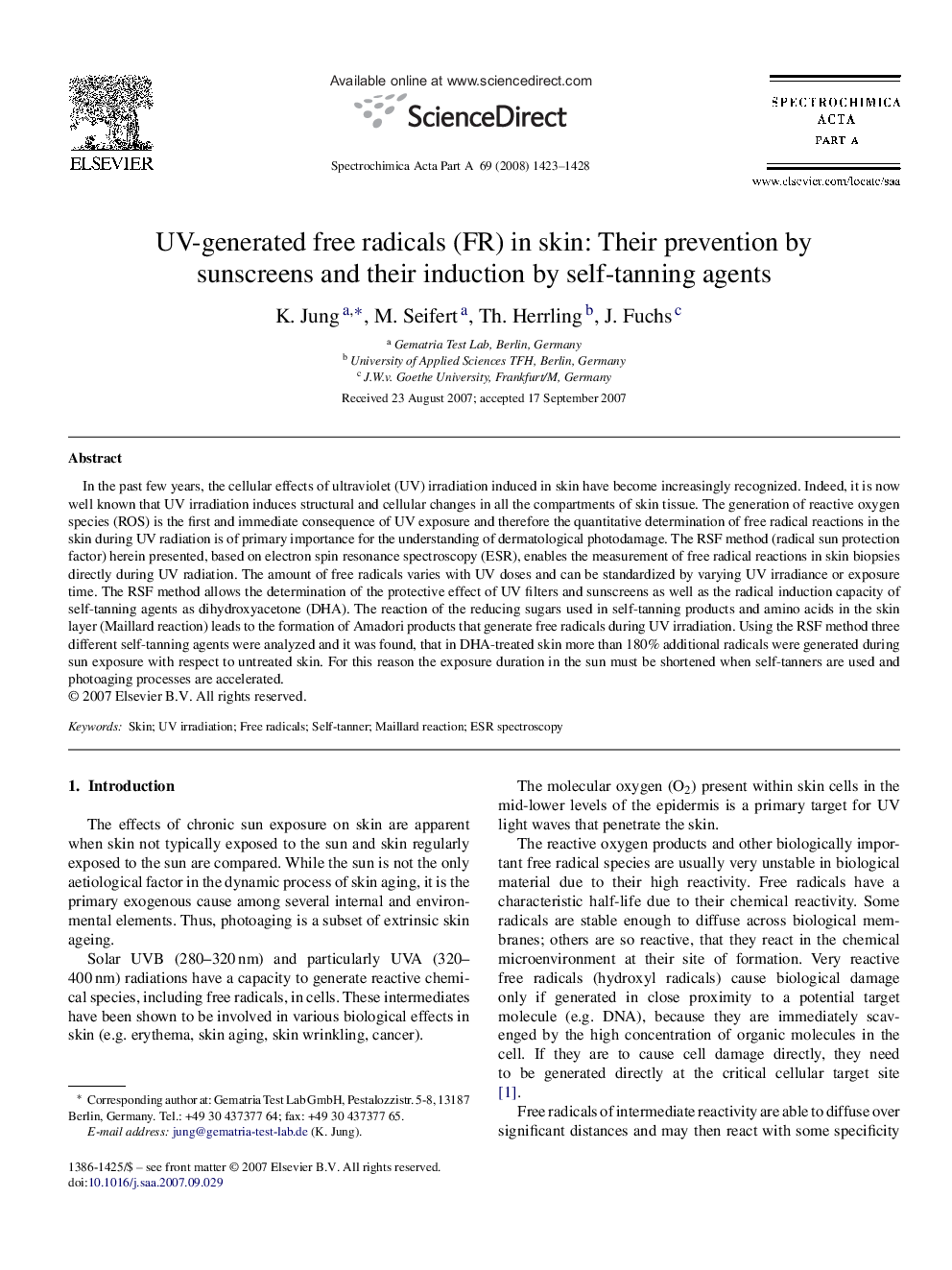| Article ID | Journal | Published Year | Pages | File Type |
|---|---|---|---|---|
| 1238244 | Spectrochimica Acta Part A: Molecular and Biomolecular Spectroscopy | 2008 | 6 Pages |
In the past few years, the cellular effects of ultraviolet (UV) irradiation induced in skin have become increasingly recognized. Indeed, it is now well known that UV irradiation induces structural and cellular changes in all the compartments of skin tissue. The generation of reactive oxygen species (ROS) is the first and immediate consequence of UV exposure and therefore the quantitative determination of free radical reactions in the skin during UV radiation is of primary importance for the understanding of dermatological photodamage. The RSF method (radical sun protection factor) herein presented, based on electron spin resonance spectroscopy (ESR), enables the measurement of free radical reactions in skin biopsies directly during UV radiation. The amount of free radicals varies with UV doses and can be standardized by varying UV irradiance or exposure time. The RSF method allows the determination of the protective effect of UV filters and sunscreens as well as the radical induction capacity of self-tanning agents as dihydroxyacetone (DHA). The reaction of the reducing sugars used in self-tanning products and amino acids in the skin layer (Maillard reaction) leads to the formation of Amadori products that generate free radicals during UV irradiation. Using the RSF method three different self-tanning agents were analyzed and it was found, that in DHA-treated skin more than 180% additional radicals were generated during sun exposure with respect to untreated skin. For this reason the exposure duration in the sun must be shortened when self-tanners are used and photoaging processes are accelerated.
